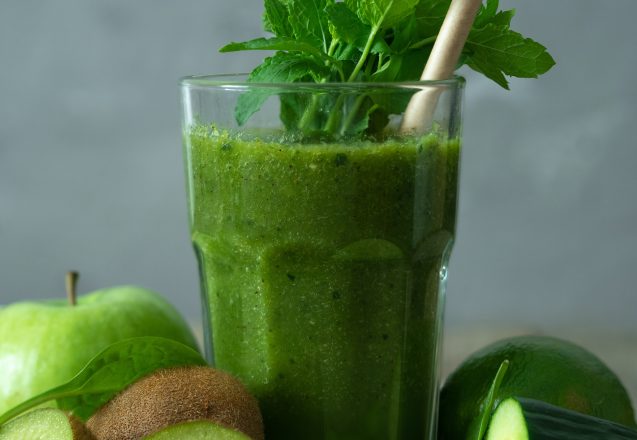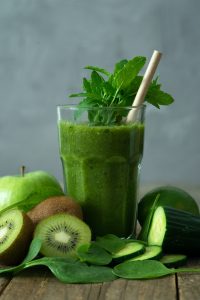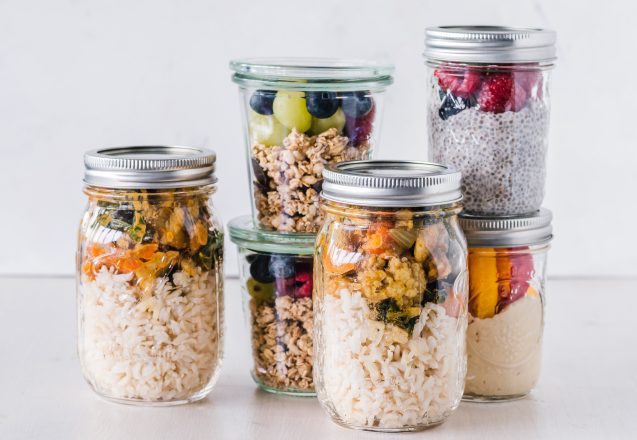The Benefits Of Strength Training
 No matter what your age or gender, you’ll reap a lot of benefits from strength training. Most people think strength training is just for men, but that’s not true. Women get just as much from it, if not more. It does help build muscle tissue. Many women worry they’ll end up looking like the Hulk. They won’t. Women require long hours of special training and diet to get the bulging muscles men have. For 99% of women, strength training tones their muscles and gives them a svelte, sinewy appearance.
No matter what your age or gender, you’ll reap a lot of benefits from strength training. Most people think strength training is just for men, but that’s not true. Women get just as much from it, if not more. It does help build muscle tissue. Many women worry they’ll end up looking like the Hulk. They won’t. Women require long hours of special training and diet to get the bulging muscles men have. For 99% of women, strength training tones their muscles and gives them a svelte, sinewy appearance.
The extra muscle from strength training helps boost your metabolism.
Cardio will torch calories but so does strength training. The difference is that cardio doesn’t build muscle tissue but strength-building does. That’s important. The more muscles you have, the better your metabolism is. Muscle tissue requires more calories to maintain than fat tissue. The more you have, the more calories you burn 24/7. When you do cardio, the calories come from both fat and lean muscle tissue, compared to strength training, which burns fat and builds muscle tissue.
The older you are, the more you need strength training.
At about age 35, the body starts to lose muscle mass unless you take measures to prevent that change. It’s called sarcopenia. It causes a three to five percent loss of muscle tissue every decade. The less muscle tissue you have, the higher the potential for injury from falls or torn ligaments and muscles. Muscles also help strengthen the bone. As muscles tug on the bones, the bones receive a message to uptake more calcium to strengthen the bone. If there’s no tugging from muscle tissue or not as much, the bones lose calcium, ultimately leading to osteoporosis.
Strength training reduces stress and decreases abdominal fat.
Like all exercise, strength training burns off stress hormones like cortisol. Cortisol is linked to the accumulation of belly fat. Belly fat increases chronic inflammation, which also increases belly fat. It becomes a cycle that takes a toll on health. Most fat stored in the belly is visceral fat that’s deep in the body, crowding organs and causing an increase in serious conditions like heart disease, type 2 diabetes, and more.
- You’ll reduce the risk of injury when doing everyday activities. Strength training helps strengthen back muscles, so bending down to tie your shoes won’t set it into spasms.
- Strength training helps protect the joints and eases joint pain. It builds muscles and tendons that remove the pressure on the joints. It also increases joint lubrication.
- Strength training can lower blood pressure and improve your cholesterol panel. It helps lower blood sugar levels. That improves heart health. It reduces the risk of type 2 diabetes and helps reverse insulin resistance that can lead to type 2 diabetes.
- Strength-building is beneficial to mental health. Several studies show it can help reduce depression and anxiety while boosting self-esteem. It also improves cognitive functioning.
For more information, contact us today at LIV Fitness



 People come to LIV Fitness for many reasons. One of the biggest is the convenience. We’re open and ready to serve 24/7. People can workout any time and achieve their fitness, weight loss, and health goals. One client told us that the 24-hour access helped him get into shape and lose weight. His schedule is erratic, so work ends at odd hours. His day used to end with several drinks to help him relax and a big meal. Now he works out after work and goes home to a planned meal he can pop in the microwave. The exercise helps him wind down from the day, and meal planning helps him eat healthier.
People come to LIV Fitness for many reasons. One of the biggest is the convenience. We’re open and ready to serve 24/7. People can workout any time and achieve their fitness, weight loss, and health goals. One client told us that the 24-hour access helped him get into shape and lose weight. His schedule is erratic, so work ends at odd hours. His day used to end with several drinks to help him relax and a big meal. Now he works out after work and goes home to a planned meal he can pop in the microwave. The exercise helps him wind down from the day, and meal planning helps him eat healthier.
 Nothing is truer than the saying, “You are what you eat.” It means what you put in your mouth affects your overall health, appearance, and energy level. If you’re plagued by every new type of viral or bacterial infection, you need to start looking at your diet and other daily habits. Including immune-boosting nutrition in your life can make all the difference between being healthy or spending the weekend treating the flu.
Nothing is truer than the saying, “You are what you eat.” It means what you put in your mouth affects your overall health, appearance, and energy level. If you’re plagued by every new type of viral or bacterial infection, you need to start looking at your diet and other daily habits. Including immune-boosting nutrition in your life can make all the difference between being healthy or spending the weekend treating the flu.
 You don’t have to be a client at LIV Fitness in Livermore, CA, to understand it takes a healthy lifestyle, not just exercise, to be your fittest. Adequate sleep, plenty of hydration, and a healthy diet are other factors to help you be your best. Focusing on healthier eating is easier when you start meal planning. It saves you time and once you get into the swing of things, is faster than carryout meals. You simply heat and eat the preprepared meals.
You don’t have to be a client at LIV Fitness in Livermore, CA, to understand it takes a healthy lifestyle, not just exercise, to be your fittest. Adequate sleep, plenty of hydration, and a healthy diet are other factors to help you be your best. Focusing on healthier eating is easier when you start meal planning. It saves you time and once you get into the swing of things, is faster than carryout meals. You simply heat and eat the preprepared meals.
 At some point in life, most people have received a BMI calculation. BMI stands for body mass index. It uses your height and weight to calculate general fitness. It’s a simple calculation that uses a chart with weight at the top and height at the side. It’s a quick way for physicians to identify whether you’re underweight, healthy, overweight, obese, or extremely obese. While men and women have separate charts, eliminating that issue, there are other problems if the BMI chart is the only way you calculate weight.
At some point in life, most people have received a BMI calculation. BMI stands for body mass index. It uses your height and weight to calculate general fitness. It’s a simple calculation that uses a chart with weight at the top and height at the side. It’s a quick way for physicians to identify whether you’re underweight, healthy, overweight, obese, or extremely obese. While men and women have separate charts, eliminating that issue, there are other problems if the BMI chart is the only way you calculate weight.

 Weightlifting belts were popular in Livermore, CA, before 2000 but have since dropped out of vogue. Some people believe it can inhibit the building of lower back or core strength. It’s not a substitute for using core muscles but a way to increase the stability of your spine if you’re lifting heavy loads. It can help prevent the effect of compression on the spine. Studies show that a belt may allow you to increase muscle activity by as much as 25%. It also increases ab and lower-back muscle use.
Weightlifting belts were popular in Livermore, CA, before 2000 but have since dropped out of vogue. Some people believe it can inhibit the building of lower back or core strength. It’s not a substitute for using core muscles but a way to increase the stability of your spine if you’re lifting heavy loads. It can help prevent the effect of compression on the spine. Studies show that a belt may allow you to increase muscle activity by as much as 25%. It also increases ab and lower-back muscle use.
 The term intermittent fasting—IF—describes a technique using meal timing. People fast within a specific window and the balance of the time, eat normally. Initially, doctors used IF to help control seizures and for other medical issues. Today, many people use it for weight loss. IF isn’t rigid. You can do it in several ways. The most popular is too fast for an extended period, such as 14 to 16 hours, consuming only tea, coffee, or water, then eat normally the rest of the time. Some forms include alternating days of normal eating with fasting days or ones when you eat limited calories.
The term intermittent fasting—IF—describes a technique using meal timing. People fast within a specific window and the balance of the time, eat normally. Initially, doctors used IF to help control seizures and for other medical issues. Today, many people use it for weight loss. IF isn’t rigid. You can do it in several ways. The most popular is too fast for an extended period, such as 14 to 16 hours, consuming only tea, coffee, or water, then eat normally the rest of the time. Some forms include alternating days of normal eating with fasting days or ones when you eat limited calories.
 If you’re focused on getting in shape but in addition to building muscle, you have to lose weight, you have to be careful or you’ll sabotage your efforts. Undertaking a weight loss program doesn’t necessarily mean you’ll only lose fat. Sometimes, you lose lean muscle mass, too. When you cut calories, you don’t always have the nutrients necessary for muscle gain either. You need to focus on both diet and exercise to achieve weight loss while building or preserving muscle tissue.
If you’re focused on getting in shape but in addition to building muscle, you have to lose weight, you have to be careful or you’ll sabotage your efforts. Undertaking a weight loss program doesn’t necessarily mean you’ll only lose fat. Sometimes, you lose lean muscle mass, too. When you cut calories, you don’t always have the nutrients necessary for muscle gain either. You need to focus on both diet and exercise to achieve weight loss while building or preserving muscle tissue.
 Everyone loves something sweet, whether it’s a juicy orange or a sweet treat. The problem with satisfying that craving for sugar with chocolate or other food with added sugar makes it even more difficult to stop overeating sugary delights once you start. That’s because sugar stimulates brain neuroreceptors which opioids also stimulate. It releases the feel-good neurotransmitter dopamine. That reward increases your desire to eat more. It’s similar to using recreational drugs. The more you eat, the more you want.
Everyone loves something sweet, whether it’s a juicy orange or a sweet treat. The problem with satisfying that craving for sugar with chocolate or other food with added sugar makes it even more difficult to stop overeating sugary delights once you start. That’s because sugar stimulates brain neuroreceptors which opioids also stimulate. It releases the feel-good neurotransmitter dopamine. That reward increases your desire to eat more. It’s similar to using recreational drugs. The more you eat, the more you want.